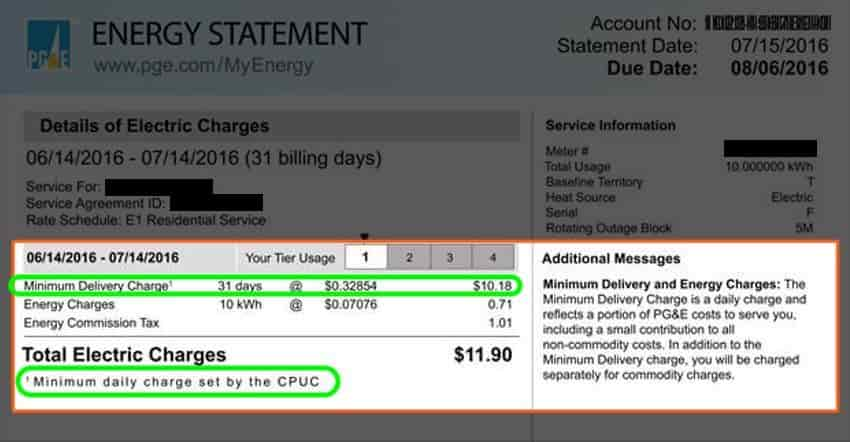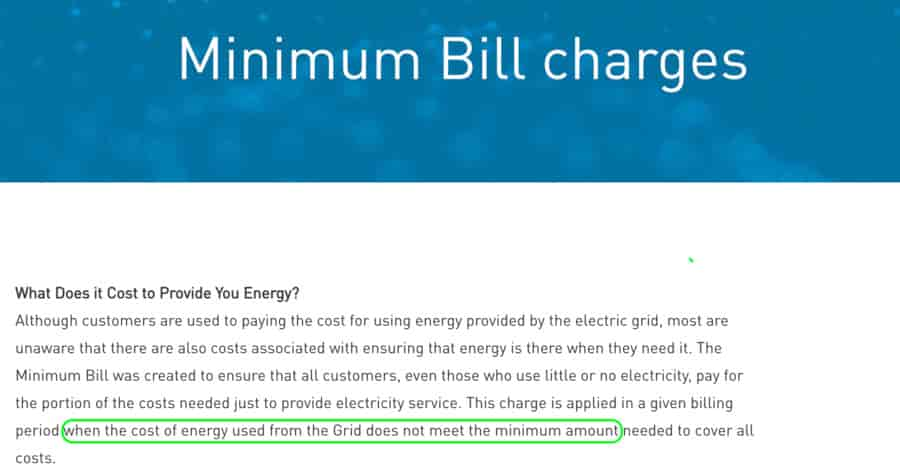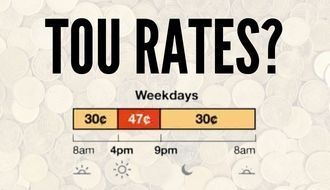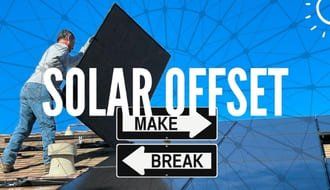What Are Minimum Delivery Charges In California & When Do I Have To Pay Them?
Solar companies sometimes forget to "speak" about how solar really works.
And one of the things that falls into that scope are Minimum Bill Charges.
But don't worry, I got you. This article will give go in-depth with everything you need to know about them.
Let's dive right into it.
Just one more note before we get started, the examples used in this blog post, are from energy utilities in CA, but it still applies to all other states in the same fashion.
Minimum Delivery Charges
Even with solar, they will still charge you something called either Minimum Delivery Charges or Electric Delivery Charges.
This fee is about ¢33 (cents) per day plus a tiny amount of tax and some other minimal charges. To approximate the total cost, you have to multiply that by the number of days in a month.
📗 To be precise, as of October 2021, with PG&E it's ¢33 per day, with SDG&E it's also ¢33 per day and with SCE it's ¢35 per day.
Example: Let's think of SCE. There are 31 days in October. So 31 x $0.35 = $10.85. Plus tax, it will end up in the $12s.
If That's The Case, Why Go solar If I'm Going To Pay That Fee?
Let's think of a scenario here...
Imagine that you went on vacation for 3 months (lucky you), and that you didn't use a single watt of energy during that time. You'd still have to pay that fee.
It'd look like this:
Also, all this time that you've been paying your electric bill, it's always been there, included in the price. Bet you didn't know that huh!
Here is proof:
With or without solar, if your electric consumption within a month falls
below the minimum amount needed to factor that into the costs, that's when you're going to get charged with this fee.
Why Do They Charge This?
Because you're still using the utilities' infrastructure (high tension power lines, street-level cables, and their meter) even if you have solar.
"Wait what, how?"
I know it sounds crazy, but for solar to work the way it works and to be able to bring in all the benefits it does, you have to use the grid through Net Metering.
As a matter of fact, you would technically use the grid in the same way a non-solar user would. That's why costs like the transportation of the electricity and grid maintenance need to be taken care of.
I know what you're thinking: "Those damn energy companies won't cut us some slack".
And I'm with you, they make me angrier than when my dog pees on the carpet. But just for this one time, I'm going to have to side with them.
Are You Crazy? Why Would You Say That?
The thing is that if we didn't use the grid to make solar work this would happen:
- You would need a much bigger system to the point where solar might stop bringing in financial benefits.
- You would need to get an array of 3+ batteries to store enough energy.
These 2 things would drive up the price and at that point, we'd be better off staying with the energy company. Think of it, if financing one battery is about $50 per month, how much more would we be paying then?
So if it boils down to choosing that or embracing the Minimum Delivery Fees of around $12 per month, which one would you choose?
Right? See why I said what I said?
Also, this is a fee mandated by the CPUC, who are the ones in charge of coming up with the legal framework for solar, and they are good guys. We'll talk about them in the next section.
With that said, it's only fair to pay our share of non-energy costs for the transportation of electricity and grid maintenance. At the end of the day, if we didn't use the evil guys' grid, we wouldn't be able to see such good savings with solar.
And When Do I Have To Pay It?
I'm glad you asked. Because most of the time, on top of hiding their existence, they will also avoid going into how they work.
And that could end up becoming a problem for you since you won't know what to pay when. It's not complicated or anything, but doesn't hurt to shine a light on this.
Here is why:
There will be some months where you produce more than you consume and there will be others where you'll use more than what you produced. And that's completely fine. That's how solar is supposed to work.
At the end of every 12 months after the date on which you got started, your energy consumption and production will get settled and they'll tell you if your solar covered 100% of the energy you used in the whole year or if it didn't.
☑️ That's called the True-Up Bill or Annual Settlement Bill.
For Example: if your production was less than your consumption for the whole year, at the time of your True-Up Bill, you'll be required to pay for that extra usage.
(Let's hope that will never be you, assuming you apply every tip I'm about to give you and you make sure to get a properly sized solar system like the guys from our Case Studies).
But anyway, going back, everything gets settled every 12 months in the True-Up Bill. Anything that has to be paid, will be due at the end of those 12 months.
⚠️ Except for one thing...
Minimum Delivery Charges. Yes, the ones we've been talking about.
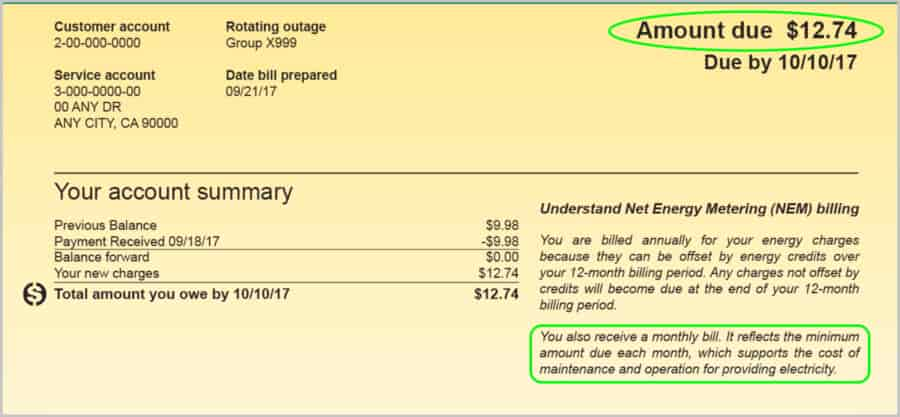
They are the ONLY ONES that have to be paid on a monthly basis to recoup the costs of grid usage as discussed above. And no, your solar is not able to pay off these costs. You have to pay for them with real money.
Aside from your true-up bill, you will get a monthly statement that'll show you how your solar is doing and it'll also require you to pay the $12ish in Minimum Delivery Charges that are owed for the month.
Say it with me one more time: Any extra energy usage or charges will be due at the time of my true-up bill. Except for the monthly Minimum Delivery Charges.
And by the way, one last thing, in case you do owe some money at the end of the year for using more than what you produced, the minimum delivery charges will help you reduce that amount.
Example: $12 a month for 12 months would be $144. Let's say that at the time of your true-up bill you used an extra $300 of energy. Those $144 would be taken as a credit and then you'd only have to pay $156 ($300 - $144 = $156).
That's ONLY if you used more energy than what your solar produced in a year.
Because if your system is properly designed to provide 100% of the energy you'd need throughout the year, the Minimum Delivery Charges won't account for anything. They have to be paid and that's it.
Summary!
- Solar relies on the grid to work.
- Since we're still using the grid even with solar, we have to pay for that.
- These charges end up being around $12 to $13 per month.
- It's the only other thing you have to pay on a monthly basis aside from your solar payment! 👍
- With the chunky monthly savings you're going to be experiencing, these guys are going to pay for themselves.
Share with those who you care about.
Let us know what you think...



